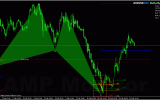One of the most important principles to bear in mind when you are formulating a forex trading and investment strategy is diversification. Simply take a quick look at broker reviews online, and it will more than likely be the first thing that gets mentioned in any trading and investment guide. There is a good reason for this; diversification is a cornerstone of any sound investment strategy. But what exactly is diversification, and why does it matter for a forex trading portfolio?
In a nutshell, diversification is a technique of reducing risk by spreading your investments. The logic is that if your investments are spread across a number of different sectors, and one of them declines in value, it won’t affect the total value of your portfolio in the same way as it would if you were only invested in one asset type. This also works as a way of increasing the likelihood that the value of your portfolio will increase so that if you are spread across several different markets, it is more than likely one of them will go up in value.
You can work diversification into your trading portfolio at many levels, which might include investing in several different asset classes – like forex, cryptocurrency, and stocks – as well as keeping yourself diversified within these – for example, by trading some different currency markets. Additionally, you might also look to diversify your investments across several different regions. In this way, you get a sense of how diversification is a way of reaching long-term financial goals while also minimizing the risks associated with the ups and downs of the markets.
Diversification is a general principle that applies across all asset classes and market types. But what do forex traders need to keep in mind when diversifying their currency trading portfolio?
The balance between major and minor currencies
One of the most important things to get right when it comes to diversifying your forex trading portfolio is finding the right balance between major and minor currency pairs. Given that the USD is the most actively traded currency, it is hard to avoid having a portfolio that relies on it quite heavily, and this is true for all the major currency pairs such as the JPY, the EUR, or the GBP. However, just because they are the most actively traded, you shouldn’t let this lull you into a false sense of security. As such, you should try to add in some minor or exotic currency pairs to ensure your risk exposure is spread across a range of currencies.
Watch your regions and markets
Another element of diversifying a forex trading portfolio that is often overlooked is regional diversification. Although you might trade a number of major and minor currency pairs and be well-diversified in this sense, if all of them are tied to the European region, this won’t do much to protect you from an economic downturn in Europe. As such, you shouldn’t just look at the total number of currencies represented in your portfolio but should also make sure these are spread across different regions – for example, EMEA, North America, and Asia-Pacific.


